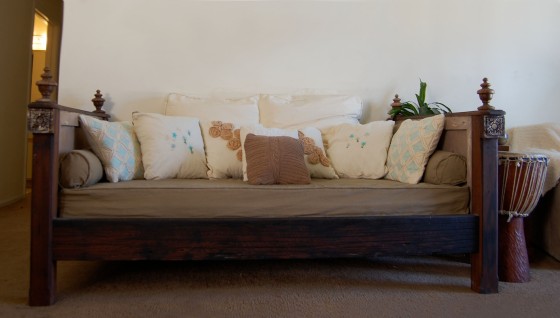
DIY Eco-friendly Daybed
Our old couch needed to go. It was ripped and ripping more, stained, and, most depressingly, toxic. For years California had a misguided law requiring sofas to be soaked with flame retardants in order to buy homeowners a measly four additional seconds in the event of a fire. Unfortunately those flame retardants are also neurotoxins that off-gas into our homes & accumulate in dust. (BTW, those four seconds better be enough to get you far, far away from the sofa because once those flame retardants burn they make really poisonous smoke.) The laws have changed over the past year or so and sofas without flame retardants are available from certain manufacturers. Thanks to all the environmental groups and everyone who worked for this change!
Before the law change, after exhausting every option to find a sofa free of flame retardants under cringe-worthy prices like $5,000, we decided to make our own.
Now, I have to note right away: It may just be my personal taste but I don’t know if I would recommend a daybed as a sofa to everyone. If the daybed is wide enough to support a twin mattress, it takes a lot of pillows to fill up the gap between your back and the wall. If you don’t have enough pillows, people can’t put their feet on the floor and lean back. It’s more of a lounging situation, not a sitting situation. You could solve the problem by not making the daybed as wide as a twin mattress (less than 39 inches). Also since our TV is off to the side, the sides and posts can sometimes block our view of the television. Plus sofas have those springs under them that have that satisfying give when you sit, something you don’t get from foam on top of boards.
But this does make a terrific daybed. I’ve always loved the idea of snuggling up in pillows, reading a good book, and find myself doing it a lot. The daybed is also comfortable for naps, and as a sleeping place for our occasional guest. It will be moved to the office or a guest bedroom when we have a bigger place!
The original daybed plans are from Ana White’s website. We modified them a bit. Correction: my husband modified them a bit. Our legs are much thicker and we left off the scalloped edges. But Ana’s original Lydia daybed is beautiful, check it out!
My husband and I both love the idea of giving new life to older materials. We found reclaimed old growth redwood recycled from pickle barrels at our local eco-store World Class Supply. We used salvaged shutters and those fancy squares that go over old doors from ReStore up in Philly. (ReStore is a really cool architectural salvage store. It’s not the Re-Store affiliated with Habitat for Humanity, which is also a great place). We ended up buying the molding new b/c it was really hard to find enough matching molding to meet our needs, but if we’d had more patience that could have been salvaged too.
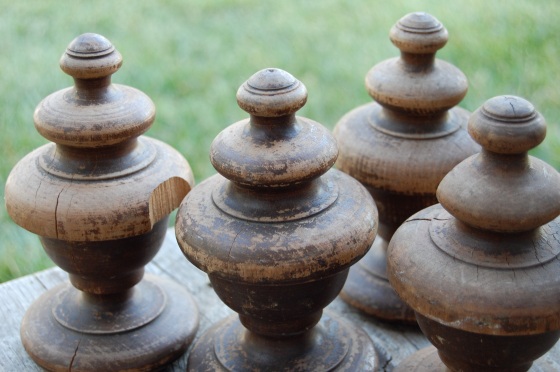
salvaged finials from an old bed, found on etsy
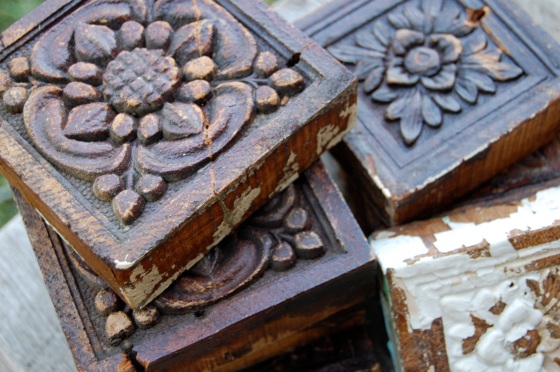
salvaged flower door frame decorations
The foam was the hard find for me. I really wanted to avoid petrochemicals and off-gassing but organic mattresses are so expensive! Plus, I wasn’t sure I wanted an organic mattress on my sofa. I eventually bought two Natural Dunlop 3″ Latex Topper Cores from Nest Bedding. They work well. For extra softness you could probably use three toppers. I used organic canvas to create a cushion cover. There’s a zipper on the back so it’s washable. I also used organic canvas fabric for the pillows and stuffed them with eco-friendly fillings. Since I wasn’t sure which would work best I tried several different options including kapok, cotton, buckwheat, old wool sweaters, and shredded rubber. Some worked better than others. That’s a post in and of itself, but I found Kapok to be far and away my favorite option. I think it turned out the most like the polyester stuffed pillows we are used to- just use a lot of Kapok because it does compact over time! It’s also nice to know this material encourages preserving the rain forest (Kapok is sustainably sourced from the rainforest tree). Organic Cotton Plus was my source for all things fabric and stuffing oriented. They are a company that sells high quality organic fabric at a reasonable price, and they were very helpful in answering my questions. I received the Kapok from White Lotus Home, and was very satisfied with it, though it took a very long time to ship. I’ve noticed Organic Cotton Plus now carries Kapok, too.
Thanks to the Makely School For Girls blog for the design inspiration and tutorial on the rosette- embellished pillow above.
This was a big project. There was a lot of experimenting and it’s still not perfect, but I’m happy with the results.
You can do this. We pulled it off in a two bedroom apartment without even a garage, never mind a work space.
I didn’t receive anything from the companies named in order to write this post. I mention them because I know how hard it can be to find truly healthy, natural options. One of my favorite parts of this project was that I got to work with such friendly and caring companies. I spoke to owners directly, almost all the invoices had handwritten notes of thanks. It makes me feel good to do business with people who are actively working to make the world a better place. I like knowing that my my order, small part it may play, is supporting them in doing a good thing.

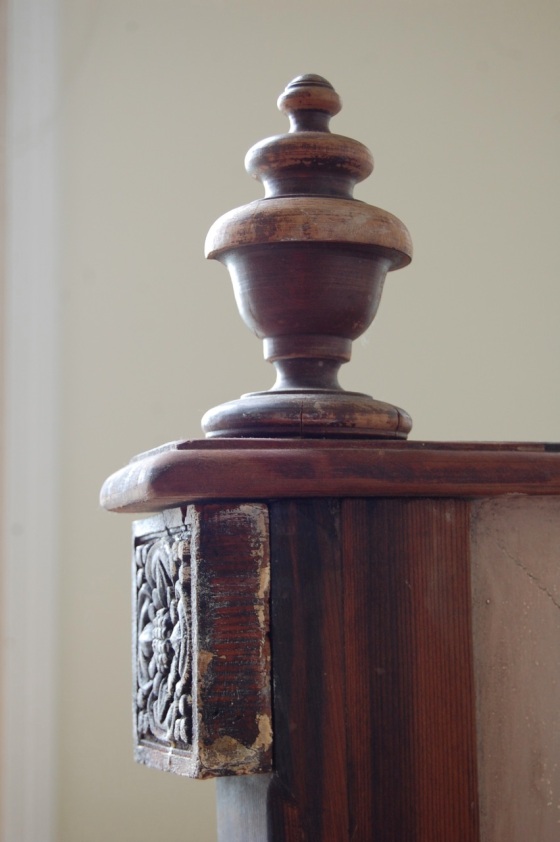
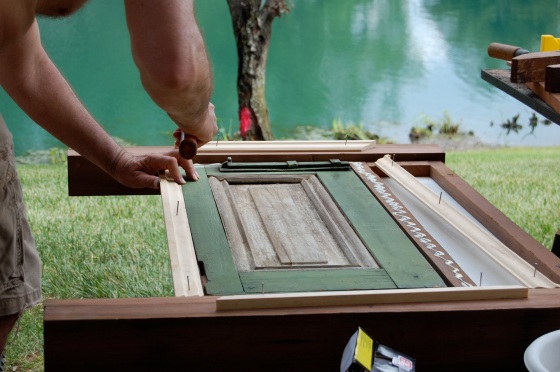
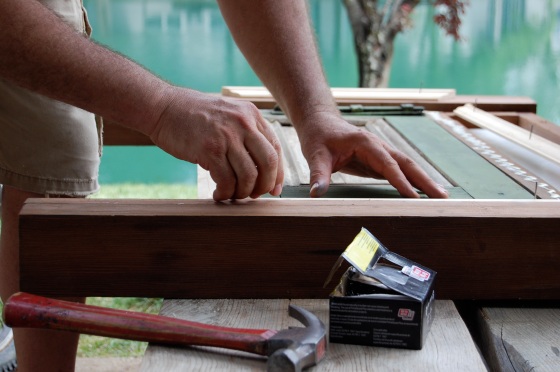
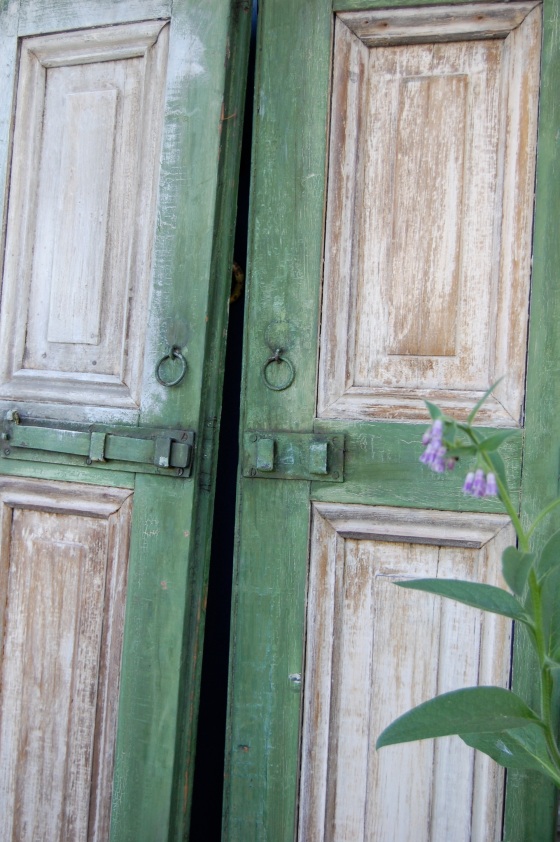

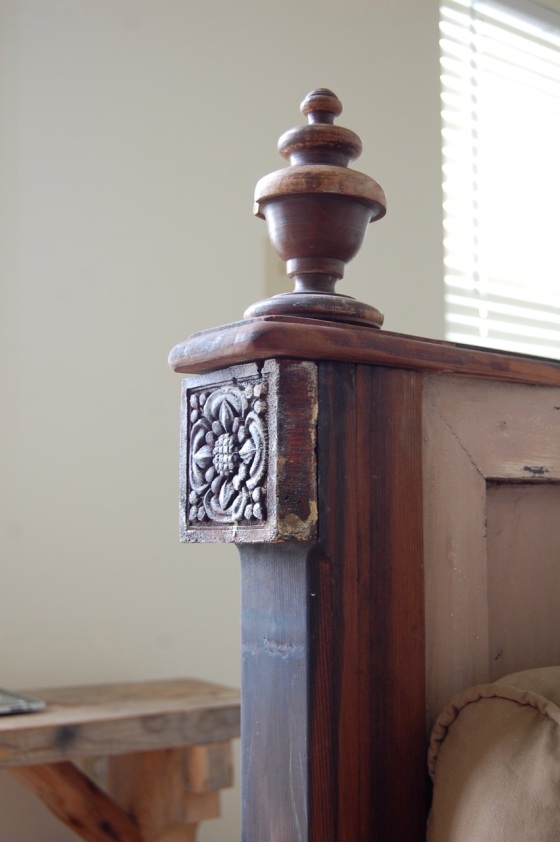
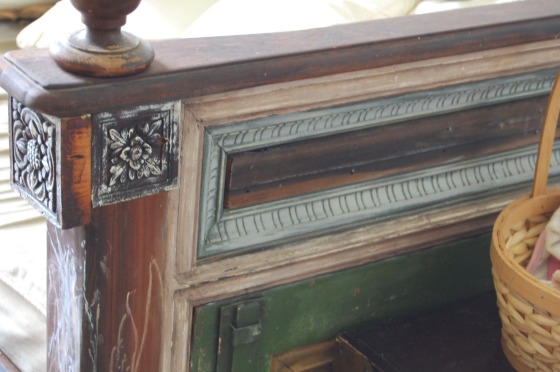

That bed is BEAUTIFUL. You did such a great job transforming it. Feel free to check out our blog, http://www.twinspiration.co 🙂
Thanks so much, I’m glad you like it! I am enjoying looking over your blog! 🙂